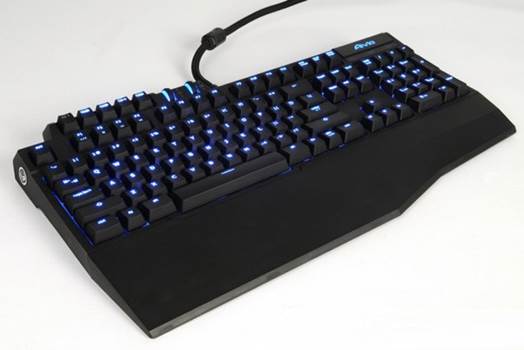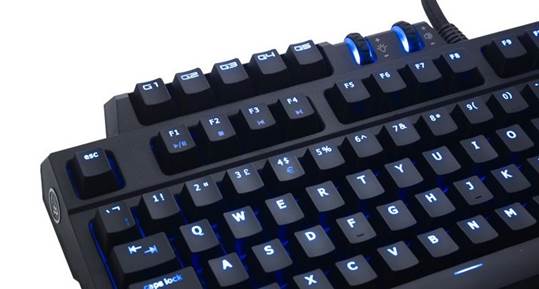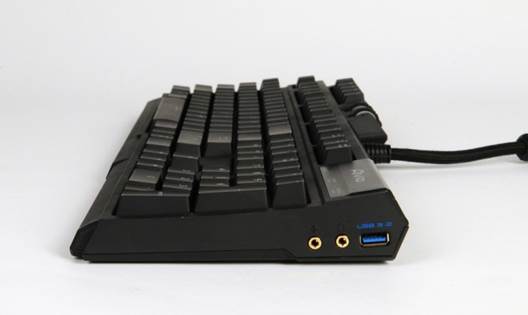Easy on the fingers but not on the
wrists
Gigabyte has finally stepped into the
Mechancel keyboard ring with a fully Loaded Cherry MX gaming keyboard named the
Osmium. Though the keyboard is stuffed with useful features, it has a few
faults that prevent it from taking up permanent residence under our fingertips.

Gigabyte
Osmium Aivia Mechanical Keyboard
The build quality is excellent, giving the
Osmium a sturdy and well-made feel with crisp, responsive keys. We Like the
matte-black finish, as well, because it looks badass and repels fingerprints.
The stars of the show are the Cherry MX Red switches that Lie underneath the
keys and are known for their quiet and smooth typing experience compared to
their clicker Blue or Black switch brethren.
The keys are backlit with bright-blue LEDs,
the intensity of which can be easily adjusted via a rubber scroll wheel at the
top of the keyboard. You can also depress the scroll wheel to turn off the
backlighting, a handy feature if you and your rig are roommates. Adjacent to
the backlighting wheel is a volume control wheel that allows you to adjust or
turn off the volume on your headphones or speakers.
Five customizable macro buttons lie just
above the F1-F5 keys for easy access, and are easily programmed with Gigabyte’s
GHOST macro software. You can store up to 70 macros on the board’s 32K of
onboard memory, so you can plug your keyboard into any computer and have your
macros handy a cool feature indeed, even if we’re not sure we’d ever use it.
You can also record up to five different macro profiles.

The
keys are backlit with bright-blue LEDs, the intensity of which can be easily
adjusted via a rubber scroll wheel at the top of the keyboard.
The Osmium features a detachable palm rest
that’s almost as large as the keyboard itself, but we actually appreciated its
full-size footprint. There is a problem, however, in that the palm rest is
angled upward, so when the keyboard lays flat on your desk, the two parts are
not flush, causing the keyboard to flex when you type, which we found annoying.
However, when the keyboard was raised up via two sets of ‘Legs” underneath it,
the board and palm rest were as snug as a bug.

Gigabyte
Aivia Osmium support (according to manufacturers) simultaneous operation of 64
keys. 10 keys accurately processed without any kind had no problems, but you
press the remaining 54, we, alas, did not come up. Is that sleep on the
keyboard.
The Osmium is sprinkled with a few other
features that garners will appreciate, including a convenient USB 3.0 port on
its right-hand side that’s useful for USB hard drives. Headset and microphone
inputs are next to the USB port, which could cause problems if your USB stick
is extra wide. The Windows key can be disabled, making it RTS friendly.
In the final tally, the Osmium is a full featured
keyboard with comfortable, responsive keys and a lot of useful tweaks for
garners. We didn’t like the flex that occurred when the keyboard was flat on
our desk, but thankfully it was fixable by extending one set of the keyboard’s
legs. The board is also a bit expensive at $130 the same price as our Latest
Dream Ma chine board, the Corsair K90. We prefer the K90, although it
admittedly lacks inputs for headphones and USB 3.0. Still, we’ll take comfort
over features any day.